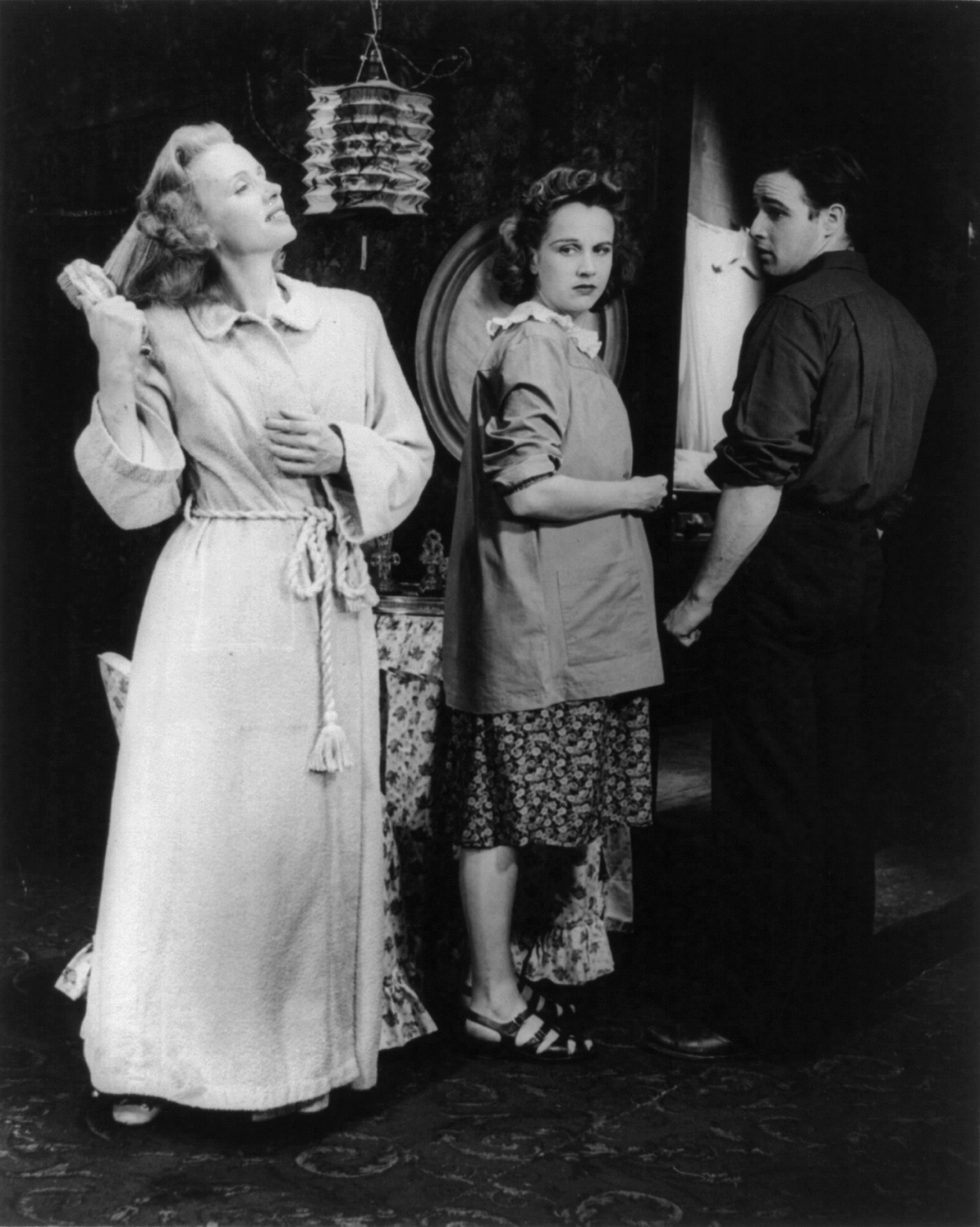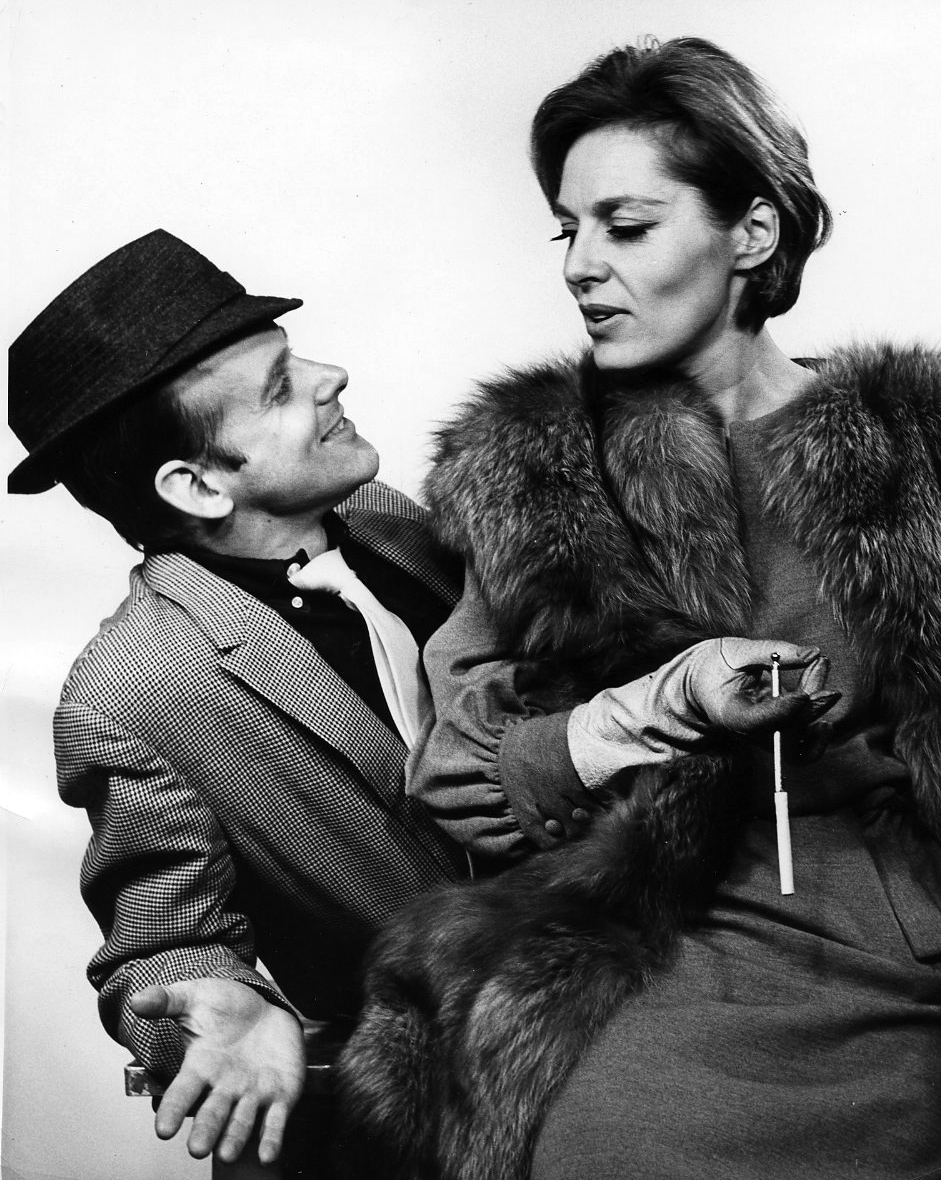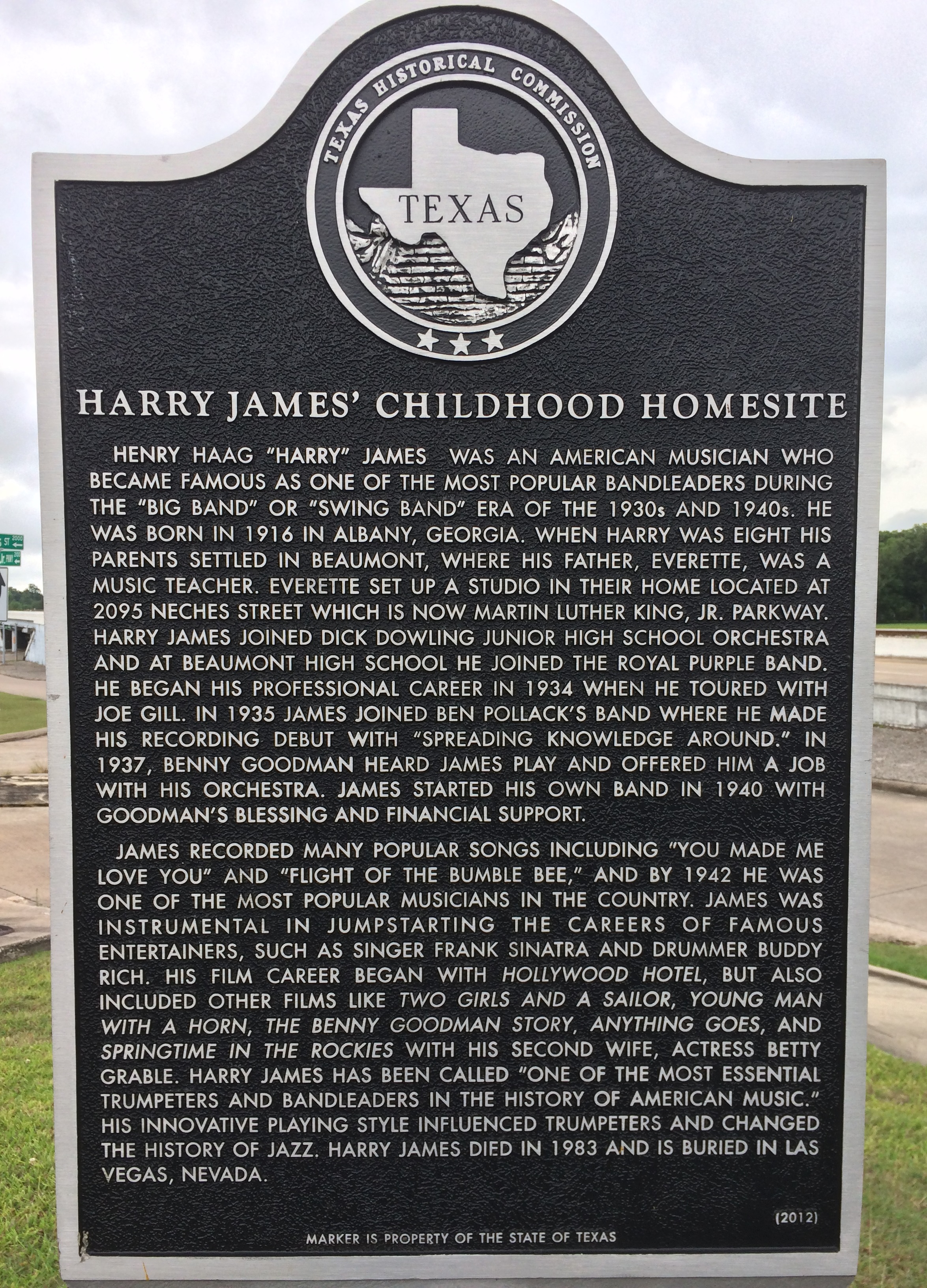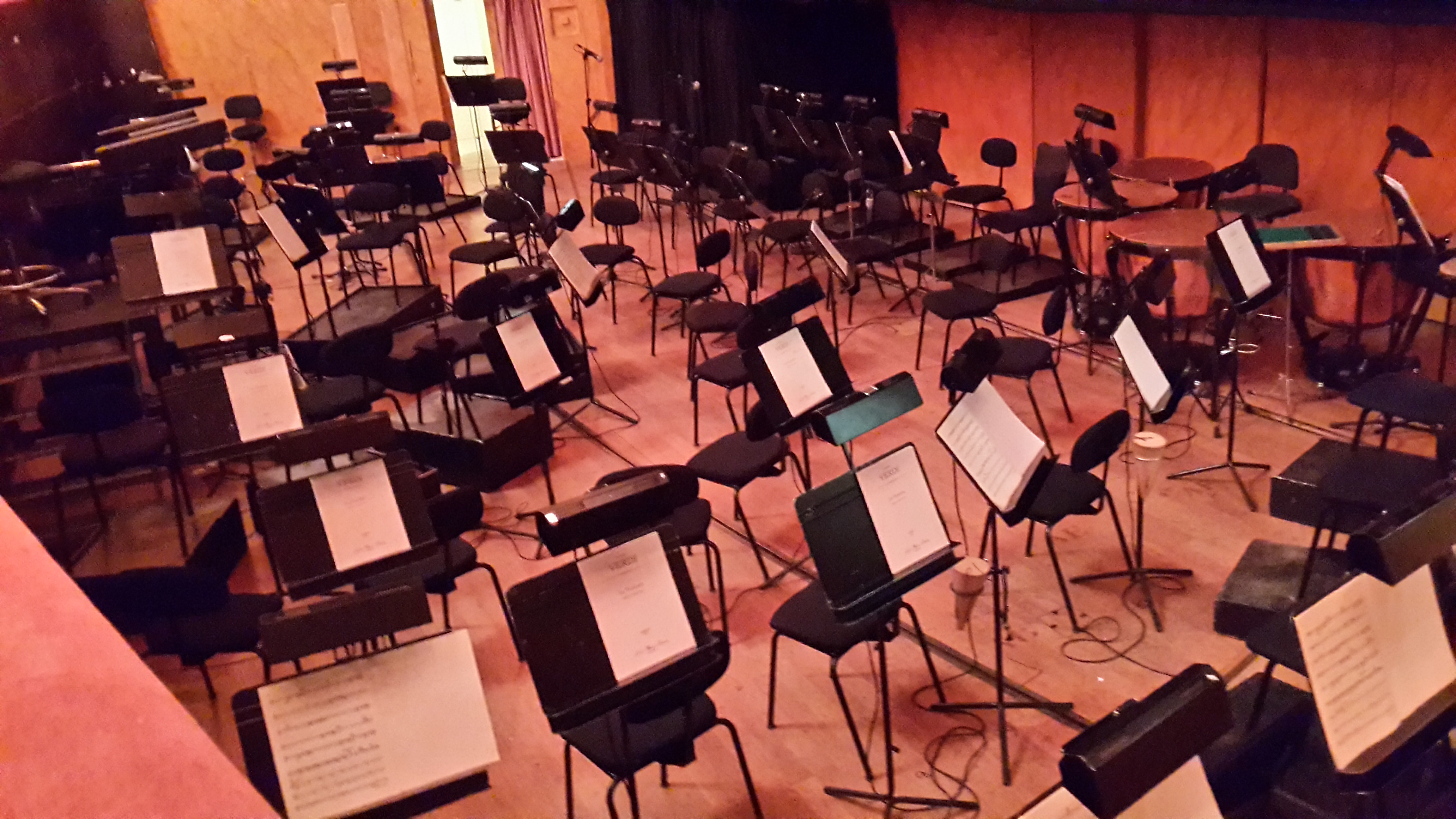|
Dick Vance
Dick Vance (November 28, 1915 - July 31, 1985) was an American jazz trumpeter and arranger. Biography Richard Thomas Vance was born in Mayfield, Kentucky, and raised in Cleveland, Ohio, where he learned violin before concentrating on trumpet. He played in Cleveland with J. Frank Terry (1932) before joining Lil Armstrong's band in 1934. He moved to New York City and played with Willie Bryant, Kaiser Marshall, and Fletcher Henderson (1936–38); in Henderson's band he was lead trumpeter and occasionally sang. In 1939, he joined Chick Webb's orchestra, and remained in the group when Ella Fitzgerald took over leadership. Upon the disbanding of the Webb band, Vance became the staff arranger for Glen Grey's band and, in 1942, joined the Lucky Millinder Orchestra. Following this he worked with Charlie Barnet, Don Redman, Eddie Heywood (1944–45), and Ben Webster. From 1944 to 1947 he studied at Juilliard, and moonlighted as a pit orchestra musician and an arranger for artists Harry Ja ... [...More Info...] [...Related Items...] OR: [Wikipedia] [Google] [Baidu] |
Mayfield, Kentucky
Mayfield is a home rule–class city and the county seat of Graves County, Kentucky, United States. The population was 10,017 as of the 2020 United States Census. History 19th century Mayfield is in the center of the Jackson Purchase, an eight-county region purchased by Isaac Shelby and Andrew Jackson from the Chickasaw people in 1818. Mayfield was established as the county seat of Graves County in 1821, and the county was formally organized in 1823. John Anderson is believed to have been the first white settler, arriving in 1819 and building a log home on Mayfield Creek. In December 1821, Anderson was appointed county court clerk and moved about two and a half miles to the site that became Mayfield. According to Trabue Davis, the town's name originates indirectly from a gambler named Mayfield, who was kidnapped about 1817 at a racetrack near what is now Hickman. He was carried to the site of today's Mayfield, where he carved his name into a tree in hopes that someone wou ... [...More Info...] [...Related Items...] OR: [Wikipedia] [Google] [Baidu] |
Don Redman
Donald Matthew Redman (July 29, 1900 – November 30, 1964) was an American jazz musician, arranger, bandleader, and composer. Biography Redman was born in Piedmont, Mineral County, West Virginia, United States. His father was a music teacher, his mother was a singer. Beginning by playing the trumpet at the age of three, Redman joined his first band at the age of six and by the age of 12 was proficient on all wind instruments ranging from trumpet to oboe as well as piano. He studied at Storer College in Harper's Ferry and at the Boston Conservatory, then joined Billy Page's Broadway Syncopaters in New York City. He was the uncle of saxophonist Dewey Redman, and thus great-uncle of saxophonist Joshua Redman and trumpeter Carlos Redman. Career In 1923, Redman joined the Fletcher Henderson orchestra, mostly playing clarinet and saxophones. He began writing arrangements, and Redman did much to formulate the sound that was to become swing. A trademark of Redman's arrangem ... [...More Info...] [...Related Items...] OR: [Wikipedia] [Google] [Baidu] |
The Story Of Popular Music
''The'' () is a grammatical article in English, denoting persons or things that are already or about to be mentioned, under discussion, implied or otherwise presumed familiar to listeners, readers, or speakers. It is the definite article in English. ''The'' is the most frequently used word in the English language; studies and analyses of texts have found it to account for seven percent of all printed English-language words. It is derived from gendered articles in Old English which combined in Middle English and now has a single form used with nouns of any gender. The word can be used with both singular and plural nouns, and with a noun that starts with any letter. This is different from many other languages, which have different forms of the definite article for different genders or numbers. Pronunciation In most dialects, "the" is pronounced as (with the voiced dental fricative followed by a schwa) when followed by a consonant sound, and as (homophone of the archaic pro ... [...More Info...] [...Related Items...] OR: [Wikipedia] [Google] [Baidu] |
Eddie Barefield
Edward Emanuel Barefield (December 12, 1909 – January 4, 1991) was an American jazz saxophonist, clarinetist and arranger most noteworthy for his work with Louis Armstrong, Cab Calloway, Ella Fitzgerald, and Duke Ellington. Barefield's musical career included work as an arranger of the ABC Orchestra and for the "Endorsed by Dorsey: program on WOR. He also appeared in several films. He married performer Connie Harris. Biography Barefield was born in Scandia, Iowa, on December 12, 1909. He grew up in Des Moines. His father was a coal miner, boxer, baseball player, and guitarist, and his mother was a pianist. Barefield began playing the saxophone at the age of twelve. His mother bought him the instrument as a Christmas gift, and he took it apart to see how it worked. He started playing throughout the Midwest, and gained his first major big-band experience with the Bennie Moten orchestra of 1932 (which later metamorphosed into the Count Basie Orchestra). This opportunity led ... [...More Info...] [...Related Items...] OR: [Wikipedia] [Google] [Baidu] |
Savoy Ballroom
The Savoy Ballroom was a large ballroom for music and public dancing located at 596 Lenox Avenue, between 140th and 141st Streets in the Harlem neighborhood of Manhattan, New York City. Lenox Avenue was the main thoroughfare through upper Harlem. Poet Langston Hughes calls it the "Heartbeat of Harlem" in Juke Box Love Song, and he set his work "Lenox Avenue: Midnight" on the legendary street. The Savoy was one of many Harlem hot spots along Lenox, but it was the one to be called the "World's Finest Ballroom". It was in operation from March 12, 1926, to July 10, 1958, and as Barbara Englebrecht writes in her article "Swinging at the Savoy", it was "a building, a geographic place, a ballroom, and the 'soul' of a neighborhood"."Swinging at the Savoy" by Barbara Engelbrecht, ''Dance Research Journal Vol 15 No. 2 Popular Dance in Black America, Spring 1983'' It was opened and owned by white entrepreneur Jay Faggen and Jewish businessman Moe Gale. It was managed by African-American busi ... [...More Info...] [...Related Items...] OR: [Wikipedia] [Google] [Baidu] |
Streetcar Named Desire
''A Streetcar Named Desire'' is a play written by Tennessee Williams and first performed on Broadway on December 3, 1947. The play dramatizes the experiences of Blanche DuBois, a former Southern belle who, after encountering a series of personal losses, leaves her once-prosperous situation to move into a shabby apartment in New Orleans rented by her younger sister and brother-in-law. Williams' most popular work, ''A Streetcar Named Desire'' is one of the most critically acclaimed plays of the twentieth century.Williams, Tennessee (1995). ''A Streetcar Named Desire''. Introduction and text. Oxford: Heinemann Educational Publishers. It still ranks among his most performed plays, and has inspired many adaptations in other forms, notably a critically acclaimed film that was released in 1951.Production notesDecember 3, 1947—December 17, 1949IBDb.com Plot After the loss of her family home to creditors, Blanche DuBois travels from Laurel, Mississippi, to the New Orleans French Qu ... [...More Info...] [...Related Items...] OR: [Wikipedia] [Google] [Baidu] |
Beggar's Holiday
''Beggar's Holiday'' is a musical with a book and lyrics by John La Touche and music by Duke Ellington. History and background The project originated with black scenic designer Perry Watkins, who envisioned a jazz-driven adaptation of John Gay's The Beggar's Opera. Watkins hired John Latouche, who'd written lyrics for the cantata "Ballad for Americans" and "Cabin in the Sky," and teamed him with Ellington, still best known at the time as a band leader Ellington and Latouche updated the play's locale to a modern American city and turned Macheath into what Bowers calls "a pin-stripe-suited mobster, a singing, dancing Bugsy Siegel." The book itself mixed jazz and blues rhythms with more traditional musical theater, including comedy numbers written for Zero Mostel, making his Broadway debut as Peachum The Broadway theatre, Broadway production, directed by Nicholas Ray and choreographed by Valerie Bettis, opened on December 26, 1946 at The Broadway Theatre, where it ran for 111 p ... [...More Info...] [...Related Items...] OR: [Wikipedia] [Google] [Baidu] |
Pal Joey (musical)
''Pal Joey'' is a 1940 musical with a book by John O'Hara and music and lyrics by Richard Rodgers and Lorenz Hart. The musical is based on a character and situations O'Hara created in a series of short stories published in ''The New Yorker'', which he later published in novel form. The title character, Joey Evans, is a manipulative small-time nightclub performer whose ambitions lead him into an affair with the wealthy, middle-aged and married Vera Simpson. It includes two songs that have become standards: " I Could Write a Book" and " Bewitched, Bothered and Bewildered". The original 1940 Broadway production was directed by George Abbott and starred Vivienne Segal and Gene Kelly. Though it received mixed reviews, the show ran for 10 months, the third-longest run of any Rodgers and Hart musical. There have been several revivals since, including a 2008–09 Broadway run, and a 1957 film adaptation starring Frank Sinatra, Rita Hayworth and Kim Novak. Background Author J ... [...More Info...] [...Related Items...] OR: [Wikipedia] [Google] [Baidu] |
Earl Hines
Earl Kenneth Hines, also known as Earl "Fatha" Hines (December 28, 1903 – April 22, 1983), was an American jazz pianist and bandleader. He was one of the most influential figures in the development of jazz piano and, according to one source, "one of a small number of pianists whose playing shaped the history of jazz". The trumpeter Dizzy Gillespie (a member of Hines's big band, along with Charlie Parker) wrote, The piano is the basis of modern harmony. This little guy came out of Chicago, Earl Hines. He changed the style of the piano. You can find the roots of Bud Powell, Herbie Hancock, all the guys who came after that. If it hadn't been for Earl Hines blazing the path for the next generation to come, it's no telling where or how they would be playing now. There were individual variations but the style of … the modern piano came from Earl Hines. The pianist Lennie Tristano said, "Earl Hines is the ''only'' one of us capable of creating real jazz and real swing when pl ... [...More Info...] [...Related Items...] OR: [Wikipedia] [Google] [Baidu] |
Cab Calloway
Cabell Calloway III (December 25, 1907 – November 18, 1994) was an American singer, songwriter, bandleader, conductor and dancer. He was associated with the Cotton Club in Harlem, where he was a regular performer and became a popular vocalist of the swing era. His niche of mixing jazz and vaudeville won him acclaim during a career that spanned over 65 years. Calloway was a master of energetic scat singing and led one of the most popular dance bands in the United States from the early 1930s to the late 1940s. His band included trumpeters Dizzy Gillespie, Jonah Jones, and Adolphus "Doc" Cheatham, saxophonists Ben Webster and Leon "Chu" Berry, guitarist Danny Barker, bassist Milt Hinton, and drummer Cozy Cole. Calloway had several hit records in the 1930s and 1940s, becoming known as the "Hi-de-ho" man of jazz for his most famous song, " Minnie the Moocher", originally recorded in 1931. He reached the ''Billboard'' charts in five consecutive decades (1930s–1970s). ... [...More Info...] [...Related Items...] OR: [Wikipedia] [Google] [Baidu] |
Harry James
Harry Haag James (March 15, 1916 – July 5, 1983) was an American musician who is best known as a trumpet-playing band leader who led a big band from 1939 to 1946. He broke up his band for a short period in 1947 but shortly after he reorganized and was active again with his band from then until his death in 1983. He was especially known among musicians for his technical proficiency as well as his tone, and was influential on new trumpet players from the late 1930s into the 1940s. He was also an actor in a number of films that usually featured his band. Early life Harry James was born in Albany, Georgia, United States, the son of Everett Robert James, a bandleader in a traveling circus, the Mighty Haag Circus, and Myrtle Maybelle (Stewart), an acrobat and horseback rider. He started performing with the circus at an early age, first as a contortionist at age of four, then playing the snare drum in the band from about the age of six. It was at this age that James was almost t ... [...More Info...] [...Related Items...] OR: [Wikipedia] [Google] [Baidu] |
Pit Orchestra
A pit orchestra is a type of orchestra that accompanies performers in musicals, operas, ballets, and other shows involving music. The terms was also used for orchestras accompanying silent movies when more than a piano was used. In performances of operas and ballets, the pit orchestra is typically similar in size to a symphony orchestra, though it may contain smaller string and brass sections, depending upon the piece. Such orchestras may vary in size from approximately 30 musicians (early Baroque and Classical opera) to as many as 90–100 musicians (Wagnerian opera). However, because of financial, spatial, and volume concerns, current musical theatre pit orchestras are considerably smaller (at most 20–30 musicians, including not more than ten string players). Description Typically, pit orchestras play in a lowered area in front of the stage called an orchestra pit. Inside the pit, the conductor stands facing towards the stage with their back towards the audience to coordi ... [...More Info...] [...Related Items...] OR: [Wikipedia] [Google] [Baidu] |

.png)
.jpg)



.jpg)

